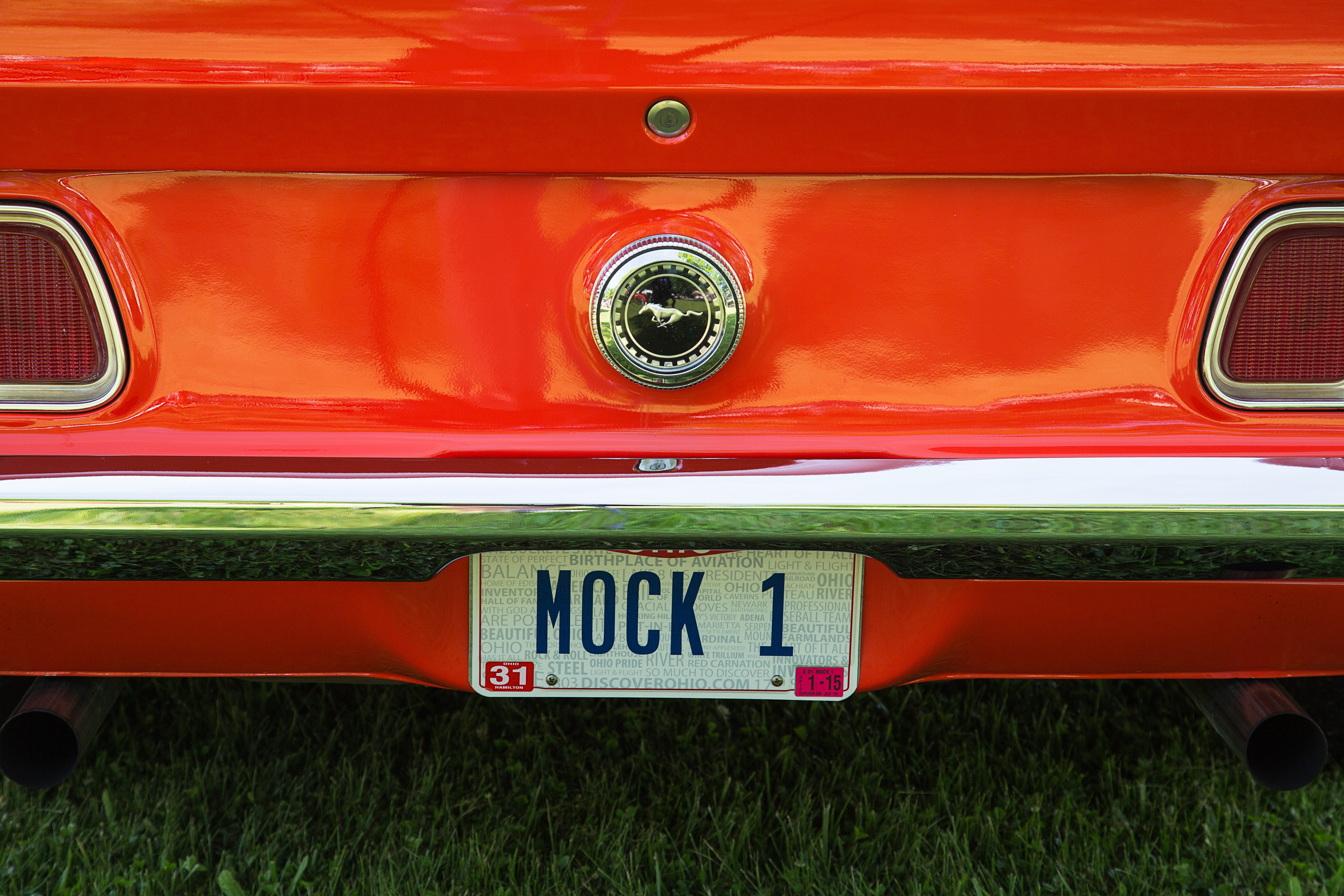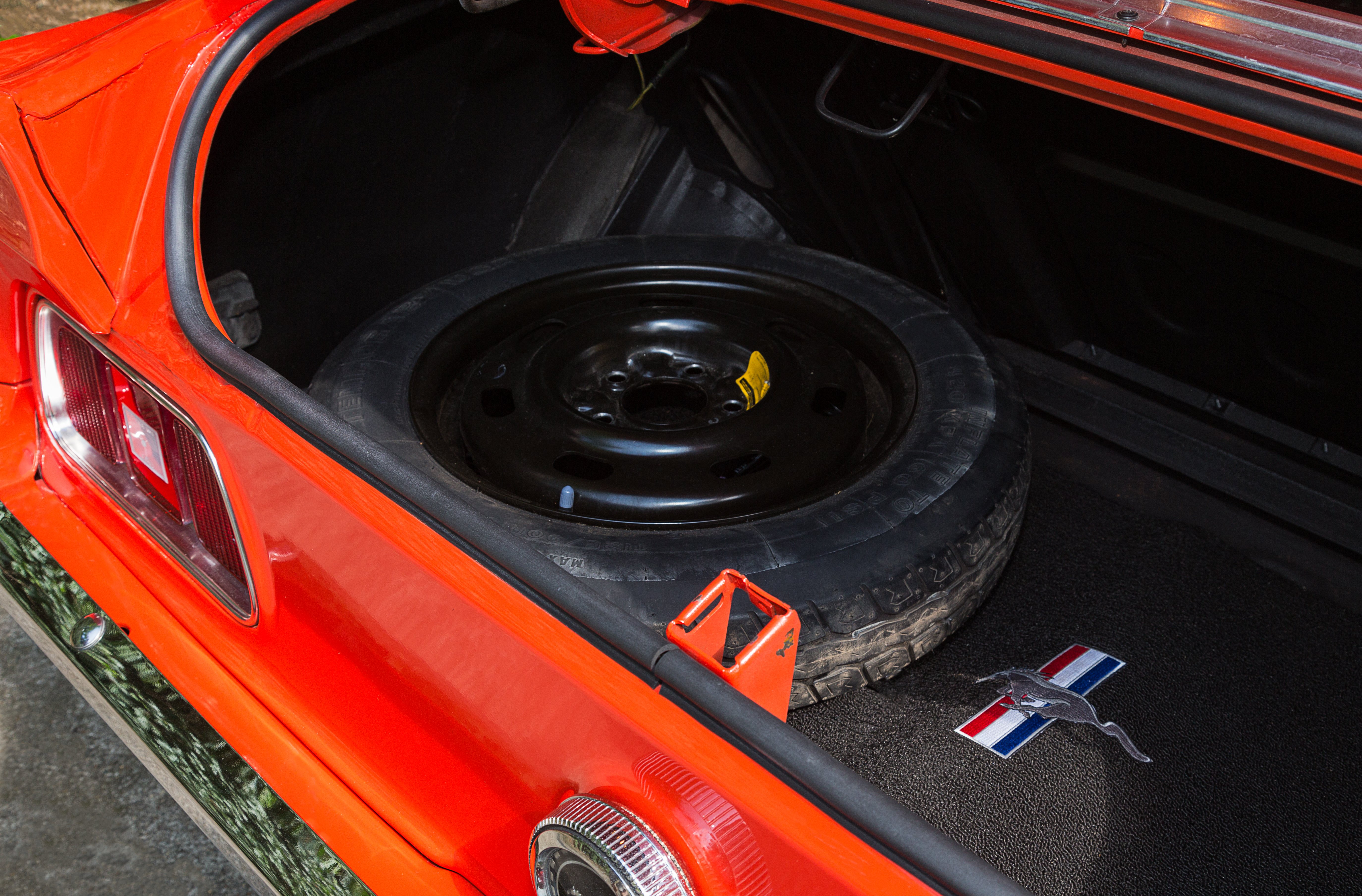Created as the sporty Mustang, Mach 1 legend’s early chapters ran through the mid-’70s. However, as the Mustang grew into its bigger body, the Mach 1 was less spry and more muscular. Its engine options reflected that intent, as small- and big-block options were available. Despite the changes, these cars still have their fans.
After driving it for a while and seeing some Coyote swaps, it got me thinking.
Among them is Michael Rench of Cincinnati, Ohio, who expanded his Mustang collection with one of the big-body Mach 1s. Part of the swan song of its generation, this 1973 example wasn’t quite pristine when Michael acquired it, so he decide to part with one car and focus on freshening this one.
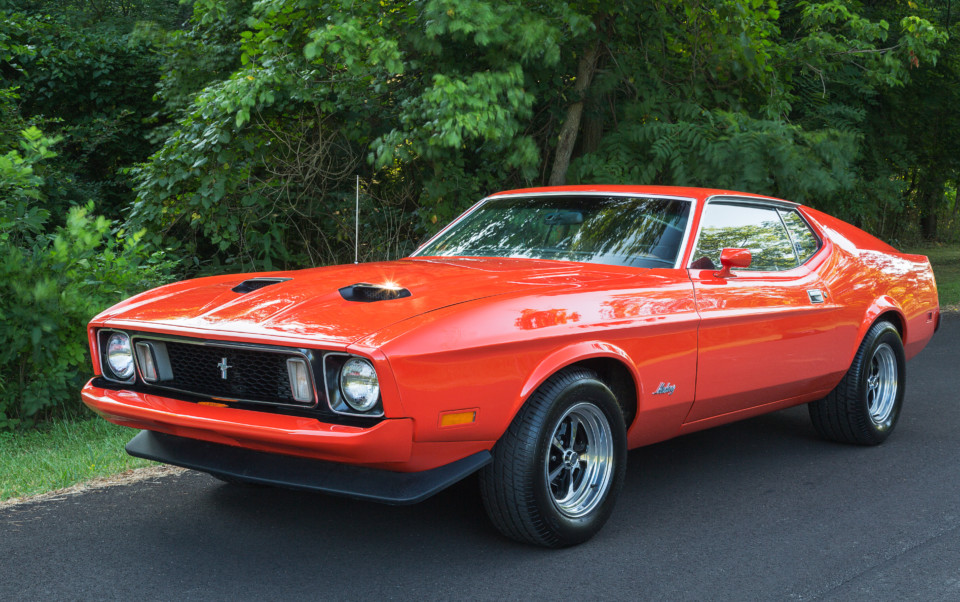
Just another clean 1973 Mustang Mach 1 Sportsroof, right? Not so fast. Michael Rench’s Coyote-powered ‘Mock 1’ takes the Malaise Era Mustang to another level. (Photos courtesy of Michael Rench)
“I bought the car in 2012 and was not sure what to do with it since I was considering restoring a ’66 Mustang that I had,” Michael explained. “I ended up selling the ’66 and decided to repaint the ’73. It was originally gold, but it had be repainted red with black stripes.”
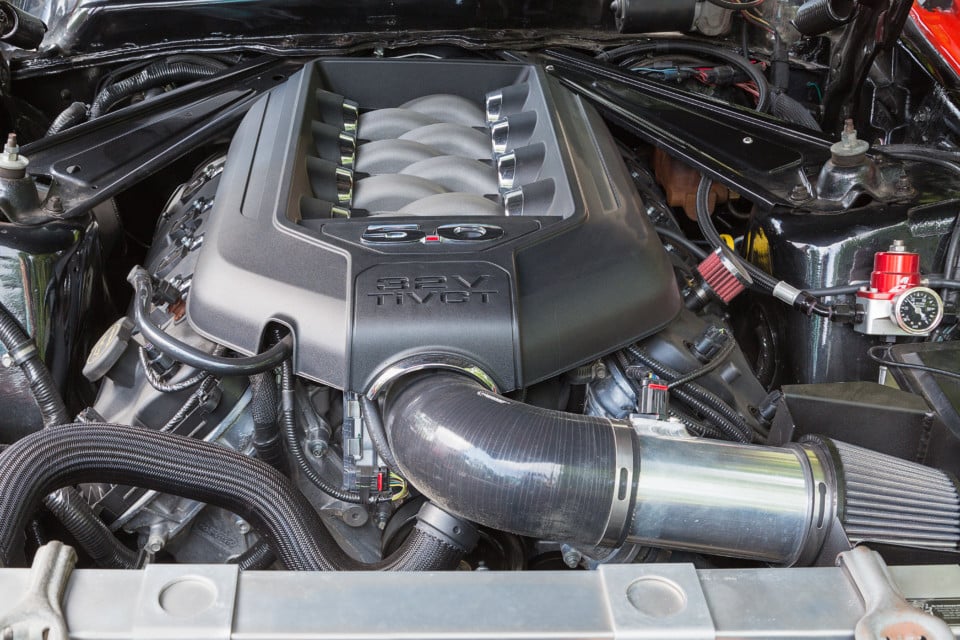
Powered by a Ford Performance Gen2 Coyote crate engine benefitting from a custom PAE induction setup, Michael’s Mach 1 howls through a PAE midpipe and Flowmaster mufflers. The combination delivers 396.43 horsepower and 387.46 lb-ft of torque at the rear wheels. It’s a tight fit, but thanks to PAE, it fits like a glove.
Change of Paint
Though it was looking good in red after the fresh coat, its performance didn’t live up to the racy exterior. As such, he began upgrading the car with an eye toward modernization. A modern overdrive trans and improved brakes helped the cause. Likewise, Michael upgraded the 351 Cleveland underhood with some of the classic upgrades.
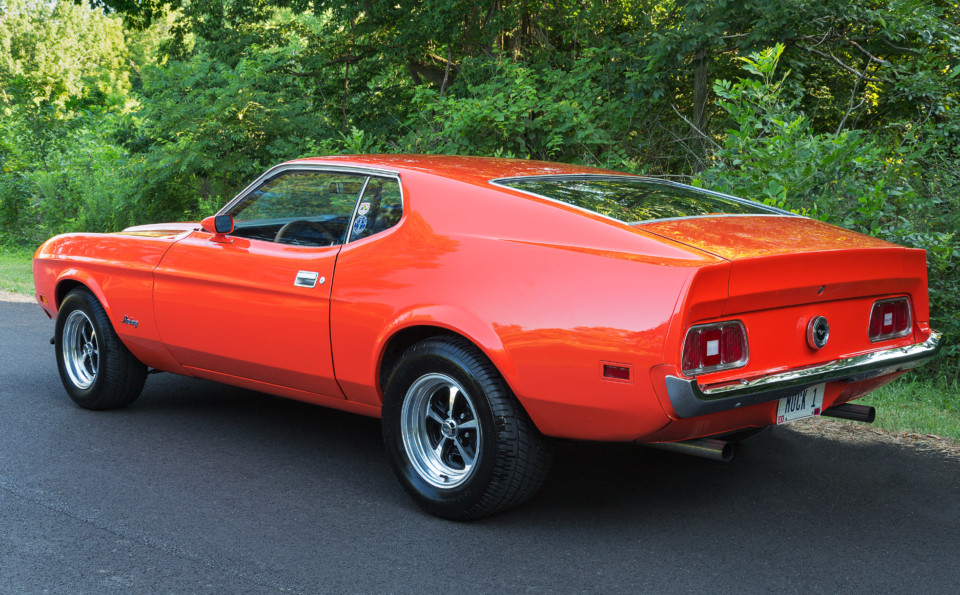
Under the Mach 1’s bodacious rearend is a Ford 9-inch axle fitted with 3.50 gears. It puts the power down via Mickey Thompson Sportsman S/T rubber mounted on American Racing VN500 15×10-inch wheels.
“The repaint turned into a complete restoration and then into a restomod project. The 351 Cleveland was rebuilt with a mild cam and headers,” Michael said. “I decided to upgrade the transmission and that led me to Paul’s Automotive Engineering where we added disc brakes and a Ford Performance World Class T-5 transmission.”
The car is a blast, and most guys do a double-take when they ask if it has a Cleveland and find out it has a modern Coyote engine.
However, ranging from 210 to 370 crankshaft horsepower the factory options pale in comparison with today’s high-output powerplants. Even with bolt-on upgrades, these engines don’t quite measure up. While it would be possible to push them to equivalent output, then the driveability of a carbureted small-block might not be quite as favorable.
1971 Mach 1 Mod List
Powertrain
Block: Gen2 Coyote 5.0L aluminum
Crankshaft: Stock Gen2 Coyote
Rods: Stock Gen2 Coyote
Pistons: Stock Gen2 Coyote
Camshafts: Stock Gen2 Coyote
Cylinder Heads: Stock Gen2 Coyote
Intake: Stock Gen2 Coyote
Power Adder: Stock Gen2 Coyote
Fuel System: Aeromotive Phantom 200 fuel pump and regulator
Exhaust: PAE midpipe and Flowmaster mufflers
Transmission: Tremec World Class T-5 five-speed manual
Rearend: 9-inch rearend with 3.50 gears
Electronics
Engine Management: Ford Performance Control Pack
Ignition: Stock Gen2 Coyote
Front Suspension
A-arms: Stock
Struts: Stock
Springs: Stock
Brakes: Stock
Wheels: American Racing VN500 two-piece wheels, 15×8-inch
Tires: Mickey Thompson Sportsman S/T, 245/60-15
Rear Suspension
Shocks: Stock
Springs: Stock
Brakes: Ford Performance disc
Wheels: American Racing VN500 two-piece wheels, 15×10-inch
Tires: Mickey Thompson Sportsman S/T, 295/50-15
Talking Swap
“After driving it for a while and seeing some Coyote swaps, it got me thinking. I ended up talking to the guys at the Ford Performance Parts display trailer at the Goodguys in Columbus,” Michael said. “As we discussed the possibility of a Coyote swap. They found out that I lived in Cincinnati and recommended that I go to Paul’s Automotive Engineering. They said PAE can put a Coyote into anything. It took Paul, Mike, and Russ a couple months to engineer the build, but they got it right.”
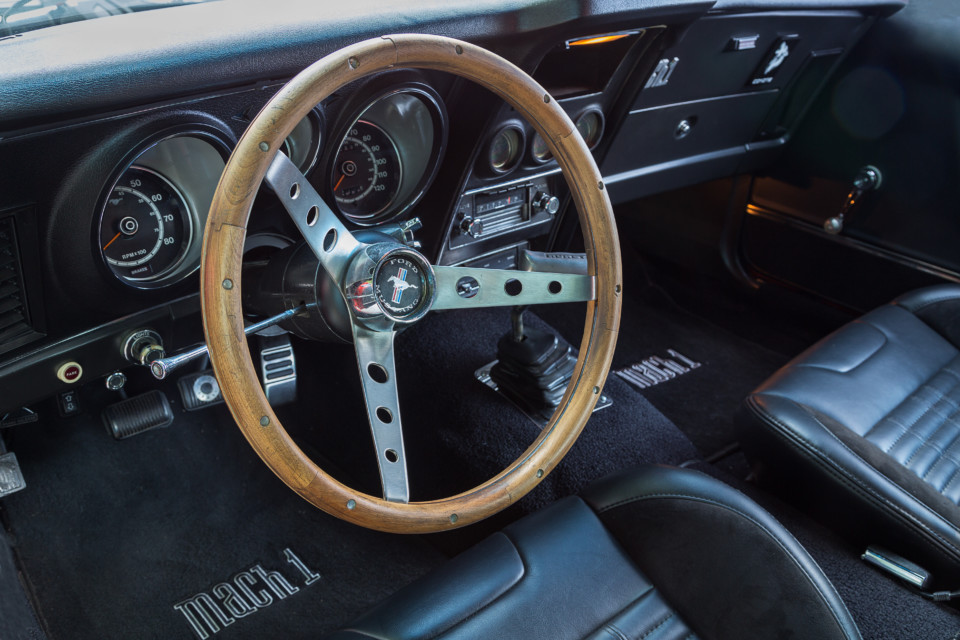
While it still retains the stock vibe, Michael’s interior enjoys a few choice upgrades, including a Hurst T-handle shifter atop the T-5 five-speed manual transmission and a set of Mach 1 embroidered floor mats. He says the finishing touch was a TMI Sport R 500 bucket seat foam and upholstery kit, which modernized the seats with improved comfort and support.
It is definitely oh so right. From the outside it just looks like a sharp ’70s Mach 1, but pop the hood and the powerplant plot takes a twist. Under the twin-scooped hood is a second-generation Coyote 5.0-liter V8 engine, which pumps out 435 horsepower and 400 lb-ft of torque. That is vastly superior to the stock four-barrel 351C that offered 280 horsepower and 370 lb-ft of torque from the factory.
Supporting Cast
“The added power required more tire. After careful measurements, I ordered a custom set of American Racing VN500 Magnum 500 wheels,” Michael said. “PAE was able to squeeze a 15×10-inch rear wheel with a 295/60/15 tire under the stock rear sheetmetal and a 15×8 with a 245/50/15 wheel and tire in front.”
That extra rubber definitely comes in handy, as the new Coyote combo delivers an additional 125.16 horsepower and 85.18 lb-ft of torque to those rear tires than the hopped up Cleveland engine did. As you might imagine, it makes for a far more enjoyable driving experience for this classic machine.
A running horse-embroidered mat cleans up the trunk, which still carries a spare tire just in case.
“With the Coyote; Flaming River rack and pinion steering; T-5 transmission, and new wheels and tires, the car is an absolute beast,” Michael enthused. “…We kept the outside clean of badging and stripes to accent the lines of the car. For pure fun, we also installed a set of electronic exhaust cut-outs so it can run straight pipes.”
Howling Good Time
Unfettered by modern exhaust restrictions, the sound of a Coyote howling at 7,500 rpm is surely glorious as it plants Michael in his seat. However, it must be a head-scratcher for those expecting the more predicable growls of a pushrod V8 throbbing at a much lower spot on the tachometer.
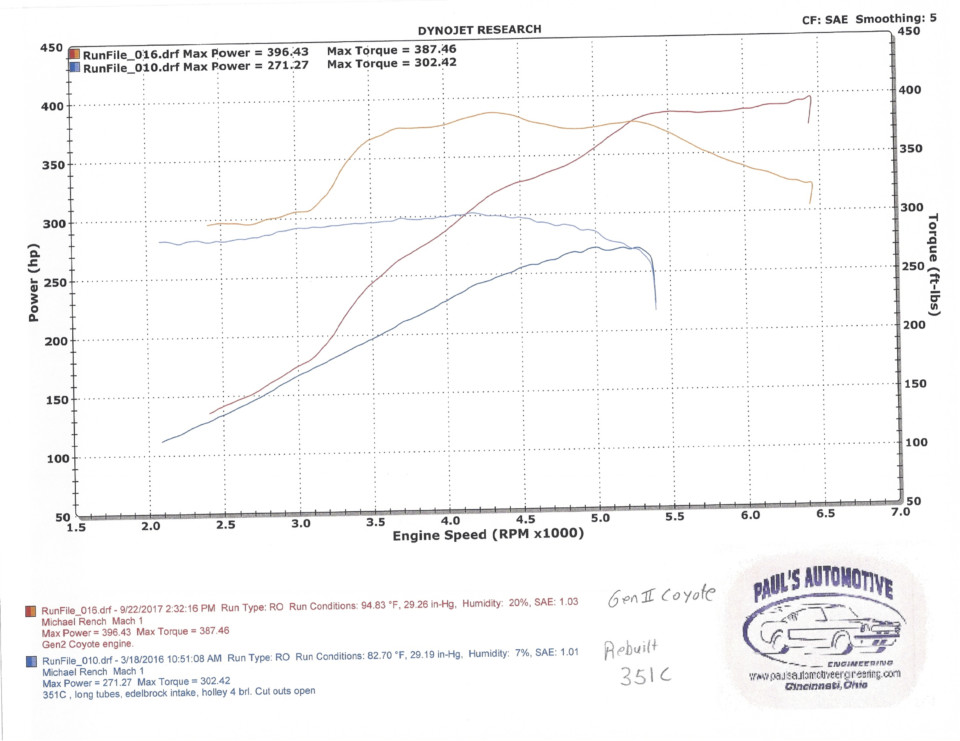
Despite the 351 Cleveland benefitting from an upgraded intake, carburetor, exhaust, the new Gen2 Coyote engine still bested its predecessor by 125.16 horsepower and 85.18 lb-ft of torque.
“The car is a blast, and most guys do a double-take when they ask if it has a Cleveland and find out it has a modern Coyote engine,” Michael added.
That’s definitely what we would call a pleasant surprise, and one that truly furthers the Mach 1’s sporty intent.

